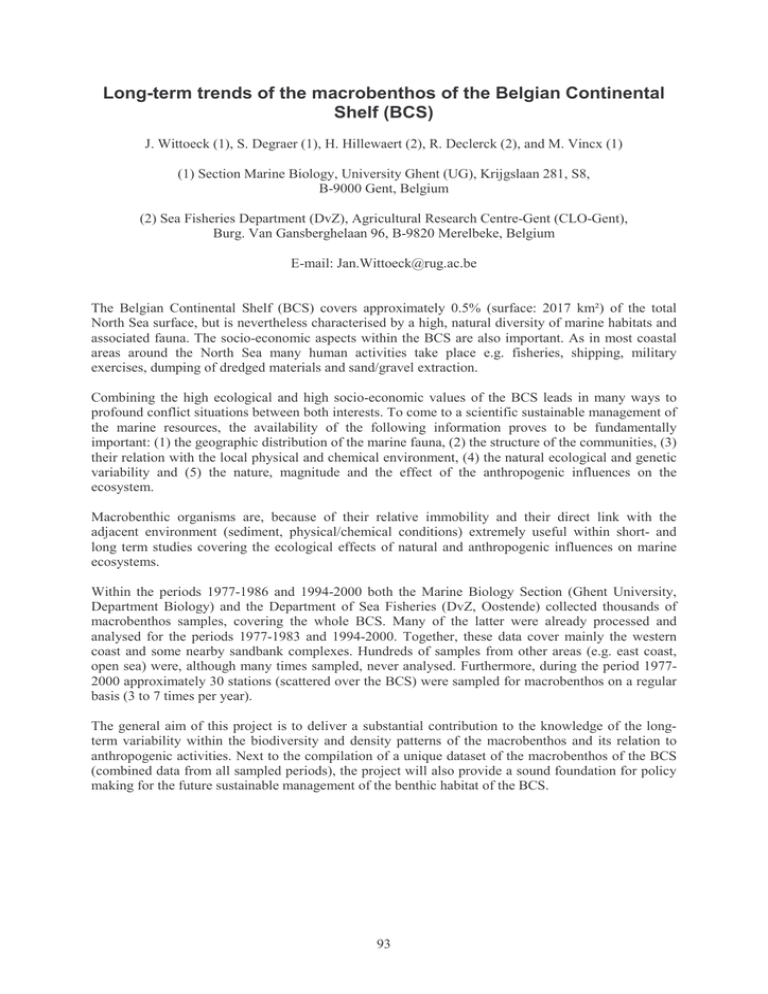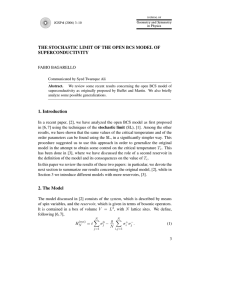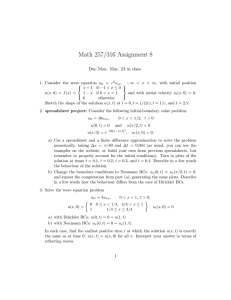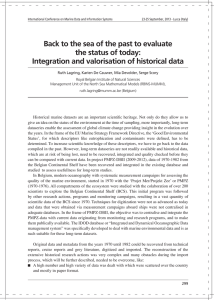Long-term trends of the macrobenthos of the Belgian Continental Shelf (BCS)
advertisement

Long-term trends of the macrobenthos of the Belgian Continental Shelf (BCS) J. Wittoeck (1), S. Degraer (1), H. Hillewaert (2), R. Declerck (2), and M. Vincx (1) (1) Section Marine Biology, University Ghent (UG), Krijgslaan 281, S8, B-9000 Gent, Belgium (2) Sea Fisheries Department (DvZ), Agricultural Research Centre-Gent (CLO-Gent), Burg. Van Gansberghelaan 96, B-9820 Merelbeke, Belgium E-mail: Jan.Wittoeck@rug.ac.be The Belgian Continental Shelf (BCS) covers approximately 0.5% (surface: 2017 km²) of the total North Sea surface, but is nevertheless characterised by a high, natural diversity of marine habitats and associated fauna. The socio-economic aspects within the BCS are also important. As in most coastal areas around the North Sea many human activities take place e.g. fisheries, shipping, military exercises, dumping of dredged materials and sand/gravel extraction. Combining the high ecological and high socio-economic values of the BCS leads in many ways to profound conflict situations between both interests. To come to a scientific sustainable management of the marine resources, the availability of the following information proves to be fundamentally important: (1) the geographic distribution of the marine fauna, (2) the structure of the communities, (3) their relation with the local physical and chemical environment, (4) the natural ecological and genetic variability and (5) the nature, magnitude and the effect of the anthropogenic influences on the ecosystem. Macrobenthic organisms are, because of their relative immobility and their direct link with the adjacent environment (sediment, physical/chemical conditions) extremely useful within short- and long term studies covering the ecological effects of natural and anthropogenic influences on marine ecosystems. Within the periods 1977-1986 and 1994-2000 both the Marine Biology Section (Ghent University, Department Biology) and the Department of Sea Fisheries (DvZ, Oostende) collected thousands of macrobenthos samples, covering the whole BCS. Many of the latter were already processed and analysed for the periods 1977-1983 and 1994-2000. Together, these data cover mainly the western coast and some nearby sandbank complexes. Hundreds of samples from other areas (e.g. east coast, open sea) were, although many times sampled, never analysed. Furthermore, during the period 19772000 approximately 30 stations (scattered over the BCS) were sampled for macrobenthos on a regular basis (3 to 7 times per year). The general aim of this project is to deliver a substantial contribution to the knowledge of the longterm variability within the biodiversity and density patterns of the macrobenthos and its relation to anthropogenic activities. Next to the compilation of a unique dataset of the macrobenthos of the BCS (combined data from all sampled periods), the project will also provide a sound foundation for policy making for the future sustainable management of the benthic habitat of the BCS. 93







